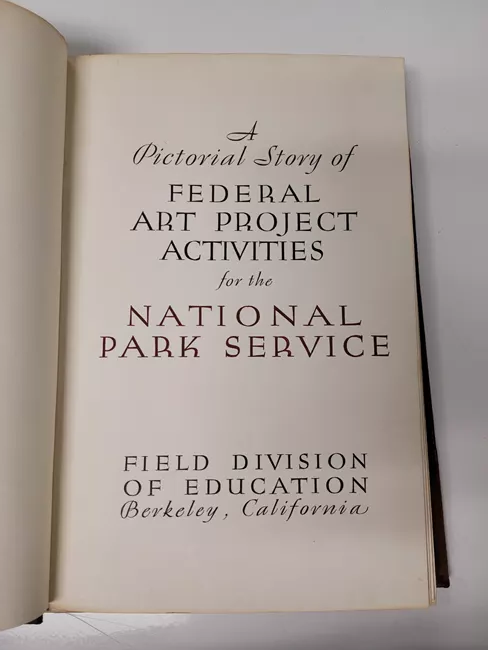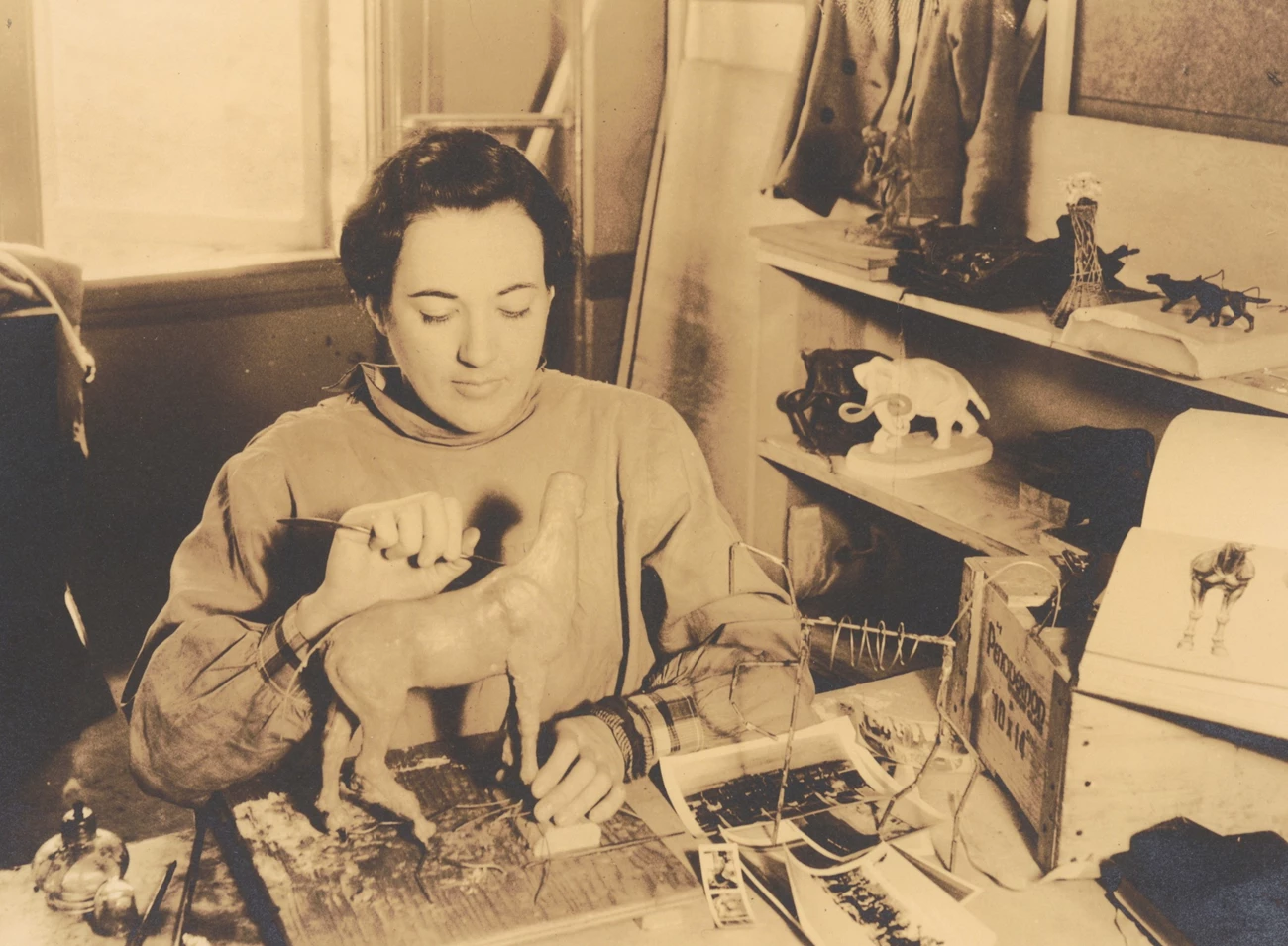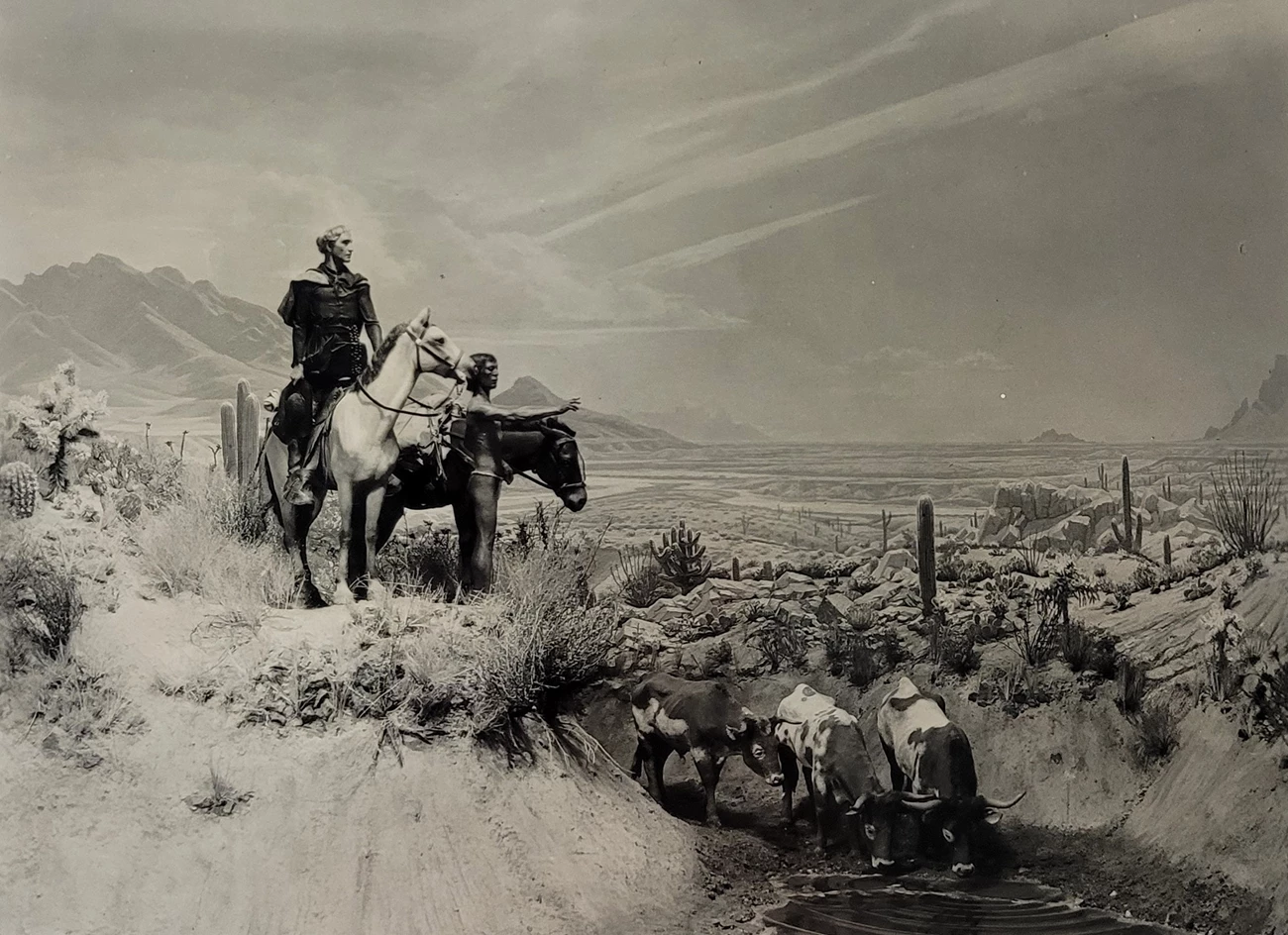Last updated: August 10, 2023
Article
50 Nifty Finds #32: A New Deal for Artists
The Works Progress Administration (WPA) did for National Park Service (NPS) education programs what the better-known Civilian Conservation Corps (CCC) did for park roads, trails, and buildings. Many artists—including a large number of women—were hired with WPA funding to create art and exhibits in parks around the country. The jobs only lasted a few years. Most NPS art created through the WPA is unsigned. Sometimes, like in the case of Natasha D. Smith, new research can reconnect art and artist—revealing a life dedicated to wildlife and environmental conservation long after her NPS career ended.
NPS and New Deal Art Programs
The New Deal was a system of federal agencies, projects, and legislative reform meant to bring economic stability and employment to the country during the Great Depression. Lasting from 1933 until the United States entered World War II in 1941, various New Deal projects had significant and long-lasting impacts on the NPS. For example, CCC projects constructed roads, trails, and buildings such as museums, employee housing, and restrooms. Other New Deal programs such as the Civil Works Administration (CWA), Public Works Administration (PWA), and National Youth Administration (NYA) contributed money and labor to NPS projects.
One of the most well-known federal programs from the New Deal era was the WPA. Like other economic recovery programs created in response to the Great Depression, it hired Americans for public projects. The Federal Art Project, which employed visual artists between 1935 and 1943, was the largest of four WPA programs that focused on art.

NPS Field Division of Education
From 1925 to 1937, the Field Division of Education created educational content for park museums. Ansel F. Hall managed the program, which was located in several buildings on land owned by the University of California, Berkeley. Metalworking and carpentry shops, a library, artists’ studios, and a darkroom supported the division's work for national parks throughout the West.
WPA funding allowed the Field Division of Education to hire skilled craftspeople and artists, as well as other workers who could be trained to assist in exhibit preparation. Students from the University of California, Berkeley were also hired. In April 1937 the Field Division of Education was renamed the Western Museum Laboratory (WML). Dorr Yeager replaced Hall as its head. Yeager became responsible for several Federal Art Projects either taking place at, or managed by, the WML.
The NPS History Collection has a copy of A Pictorial Story of Federal Art Project Activities for the National Park Service, which documents some of the WPA artists and their NPS projects. Published in 1937 by the Field Division of Education shortly before WML was created, it features drawings of wildlife, portraits of historical figures, models for use in dioramas, and hand-colored photographs and prints. The book was meant to be a “highlights reel” of museum exhibit work created in 1936 and 1937. Several women artists are featured, including Natasha D. Smith.
Natasha D. Smith
Natasha D. Smith was born October 10, 1906, in Sussex, England. Her mother, Marion Reed Smith, was widowed. She had one younger sister. Although the family planned to settle in Canada, they immigrated to the United States in 1913. Settling in Montana, they farmed their land until World War I and a drought forced them to give it up. By 1920 they moved to Idaho, the girls riding on horseback, and their mother driving a team and wagon. Later in life, Smith would credit this trip with “awakening a deep sense of connection to the natural world.”
Mrs. Smith was a graduate of Queen’s College London and earned another degree from the University of Iowa. She began working as a schoolteacher. Within a decade the family had moved to Berkeley, California, where Mrs. Smith undertook graduate courses in “child study.” She went on to own and manage an educational play school for 12 years. Both daughters were taught to value education and graduated from Mills College in Oakland, California. Natasha Smith was also a painter and sculptor. She frequently participated in local women’s art exhibitions from the late 1920s to the early 1940s.
Smith’s first known connection to the NPS occurred in 1932 when she was selected as one of 20 students to attend a six-week field school in Yosemite National Park. Founded in 1925 by Dr. Harold C. Bryant, the school provided supplemental college-level training and instruction in the natural sciences to foster the next generation of naturalists and nature guides. As Smith no doubt learned, although women could attend the school, the NPS rarely hired them into naturalist positions in parks.

Smith started working alongside the Field Division of Education staff in 1933 through an appointment with the CWA, a five-month-long New Deal program created to employ people during the harsh winter of 1933-1934. A CWA job didn’t mean that she worked for the NPS, even though she worked on projects for the NPS. She was a master’s student in the Department of Paleontology at Berkeley. Field Division of Education manager Ansel Hall drew upon the expertise in the university’s paleontology department to develop models of prehistoric animals for use in museum exhibits and dioramas. Smith focused her master’s degree on prehistoric animals, particularly horses. It was likely this melding of artistic ability and paleontological expertise that landed her the CWA job.
Smith’s work for the NPS included creating prehistoric animal models for use in exhibit dioramas at its various museums in the western United States. In 1933 she created a model of Moropus, an extinct relative of the horse, for Scotts Bluff National Monument. In a 1934 letter to museum benefactors, Charles Camp, one of Smith’s professors and director of the University of California Museum of Paleontology, remarked that she was “developing into quite a sculptress.”
After earning her master’s degree in 1935, Smith and her sister Rosemary spent five months cycling through six European countries. To be able to do so during the Great Depression suggests her family had more means than most single-parent households at the time. The adventurous women cycled up to 60 miles a day, carrying packs that increased to 100 pounds each as they bought souvenirs along their journey. They spent an extended period in London, where Natasha Smith studied fossil horse specimens for a book she planned to write. The sisters returned home to Oakland in December 1935. Natasha Smith planned to supervise nature study and art at the school established by her mother.

In 1936 Smith was hired by the WPA. Her NPS work documented in A Pictorial Story of Federal Art Project Activities for the National Park Service includes miniature models of mountain sheep and deer for Aztec National Monument (now Aztec Ruins National Monument), as well as bison and a mastodon for Mesa Verde National Park. In 1937 Smith returned to creating miniature horse models for the diorama “Father Kino on the Trail” at Tumacácori National Historical Park. As of 2023, this diorama is still on display in the park’s museum.
World War II drained labor and funding from the New Deal programs, and they ended. In 1942 Smith joined the war effort as part of the American Women’s Voluntary Services. She was sent to New Mexico where she won praise as “the most tireless and resourceful of New Mexico’s women defense workers.” She taught classes in first aid and open-air raid precautions, established the state’s first community nursery school (run by her mother) so that women could work for the war effort, and organized women to manage irrigation ditches and replace their husbands in the fields. She also sold her paintings to raise money for the war effort.

In 1943 she enlisted in the Women’s Army Corps and graduated from the officers’ training school at Fort Des Moines in Iowa. Her enrollment papers record her civilian occupation category as “artists, sculptors, and teachers of art.” She served in Louisiana and Chicago. By August 1943 she was a second lieutenant serving on the administrative training staff at Michigan State College (now Michigan State University). Smith also taught art to injured solders during the war.
After World War II, she returned to civilian life. In 1951 she completed her PhD dissertation on interpersonal communications at the University of Denver. While pursuing her degree, she met and married Carl Boyd. The couple adopted two children. They traveled widely, eventually moving to the Canadian province of British Columbia in 1973. They remained active in wildlife and habitat conservation throughout their lives. She also painted plants and animals throughout British Columbia.
Natasha Boyd died on December 4, 1999. To honor her memory, her husband bought 160 acres of wetlands and upland forests in British Columbia’s Robson Valley and donated it to The Land Conservancy of British Columbia (TLC). The Natasha Boyd Wetland Conservation Area was dedicated in 2004, two years before Carl Boyd died. In 2015 TLC transferred the land to the Nature Conservancy of Canada where it continues to provide habitat for deer, moose, bears, wolves, coyotes, beavers, snowshoe hares, and many bird species.
Sources:
-- (1929, September 11). “Artists’ Exhibit of Eastbay Women to be Feature of the Day.” Oakland Tribune (Oakland, California), p. 27.
-- 1930 United States Federal Census. Accessed via Ancestry.com.
-- (1932, May 27). “In Yosemite.” Merced Sun-Star (Merced, California), p. 8.
-- (1935, April 10). “Berkeley Girl Will Model Ancient Horses in Europe.” Oakland Tribune (Oakland, California), p. B-7.
-- (1935, December 8). “Girls See Alps Awheel.” Oakland Tribune (Oakland, California), p. A-3.
-- (1937, October 10). “Water Color Show Opens in Oakland.” Oakland Tribune (Oakland, California), p. S-5.
-- (1937, November 17). “Art Shown by City Club in Berkeley.” Oakland Tribune (Oakland, California), p. 6-B.
-- (2000). “America’s National Park System: The Critical Documents – Chapter 3: The New Deal Years 1933-1941.” National Park Service. Accessed August 3, 2023.
-- (2004). “Natasha Boyd.” Fraser Headwaters Alliance. Accessed July 21, 2023, at https://www.fraserheadwaters.org/Natashaboydbio.html.
-- (2016). “Natasha Boyd Wetland Conservation Area.” The Land Conservancy of British Columbia. Accessed July 21, 2023, at https://conservancy.bc.ca/transferred-properties/natasha-boyd-wetland-conservation-area/.
-- California, U.S. Voter Registrations, 1900-1968. Accessed via Ancestry.com.
-- Lewis, Ralph H. (1993). Museum Curatorship in the National Park Service 1904-1982. Washington, DC: National Park Service, Curatorial Services Division, pp. 49-60 and 85-106.
-- “Little People Made of Wax.” National Park Service. Accessed July 20, 2023, at https://www.nps.gov/tuma/learn/photosmultimedia/virtual-tour-museum.htm.--
Smith, David K. (undated). “The Art of Sculptor William Gordon Huff. Part I, The early years, 1903-1939”. University of California Museum of Paleontology. Accessed July 21, 2023, at https://ucmp.berkeley.edu/about/history/huff/index.php.
-- U.S. School Yearbooks, 1900-2016. Accessed via Ancestry.com.
-- U.S. World War II Army Enlistment Records, 1938-1946. Accessed via Ancestry. com.
